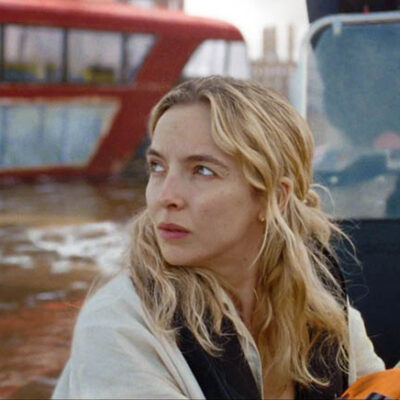Conveying zero-G was always going to be difficult especially for the spacewalk sequence. “In one of our early meetings with Framestore, Chris said to me, ‘In a perfect world, you would just shoot their heads and we’d animate everything digitally. At least we could own and control it,’” recalls Kasmir. “That stuck in my head. Even though we did try to shoot a lot practically, we decided early on that this was our methodology. We literally went through the previs and tried to cull as many beats within shots and commit to those being digital and hoped that it worked. It was an absolute leap of faith.”
The Anyma sessions were directed by Clooney. “When we set up these sessions,” Kasmir explains, “it was quite interesting because we asked each cast member if they wanted to be in costume. A couple of them wanted to be in full spacesuits while others wanted to be in tracksuits. Cast members would sit in opposite chairs feeding lines to each other while George directed. This meant that these performances couldn’t be argued about later. All that we were doing was controlling the lighting and then the rest of the body. It was a fantastic tool and a new use of this technology.”
The initial data from the Anyma sessions were encouraging. “We went in with a plan to include long, swinging wires and rails, but we realized how many challenges we were presenting to physical production,” notes Lawrence. “We were able to say, ‘We’re comfortable about the faces in this shot that we can probably get away with a digital double.’”





























